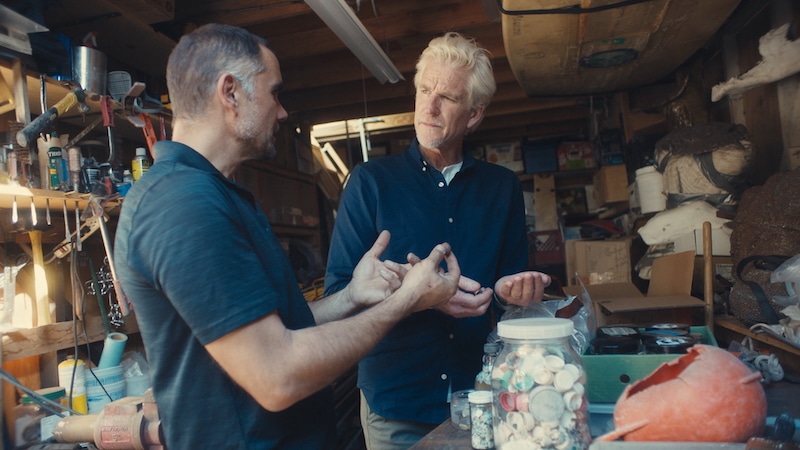
by Komoneed | Nov 20, 2024
Decisions that go into designing a new data centre will stay in place for many years to come. For instance, the cooling solutions often determine how the facility will consume vital resources such as water and energy. Equinix is committed to using water responsibly, which means we include several considerations about the local water context as we design our data centres.
Last year, we were designing a new data centre in an area where the public had concerns about water stress. The facility was originally intended to use evaporative cooling, which relies on evaporating water to cool the building. The benefit of this approach is that it is substantially more energy efficient than cooling systems that don’t use water.
We conducted an in-depth water stress analysis to gain a more comprehensive understanding of the local water context. This analysis included assessing physical water availability, infrastructure and local resiliency planning to understand how prepared the metro was in case of increased water stress.
Although the metro was well prepared for a drought or other increases in water stress, we decided to switch the building cooling system to use air cooling. Since air cooling consumes substantially less water, we proactively aligned with local concerns about water stress, which reflects our commitment to minimising our impact. However, air cooling also consumes more energy, which is why it isn’t right for every location.
When it comes to balancing the trade-offs between water and energy consumption, getting it right during the design phase is essential, as there are only opportunities for incremental water efficiency improvements after a data centre is operational.
What is water stress?
According to the Pacific Institute, a leading research institute focused on water issues, water scarcity refers only to volumetric availability: the ratio of human water consumption to available water supply in an area. In contrast, water stress is a broader, more inclusive concept. Water scarcity is one aspect of water stress, but it also includes other physical factors, such as water quality and environmental flows, and economic factors such as water accessibility.
Understanding the local water context, including water stress levels, is the foundation of our approach to using water responsibly. In 2023, we codified our commitment to avoid using evaporative cooling in areas with high water stress because using evaporative cooling is by far the largest driver of water consumption in data centres.
How does data centre cooling impact water consumption?
IT equipment running in data centres creates heat, and that heat has to go somewhere. Choosing a cooling solution will determine how a facility consumes water and energy, which are both essential aspects of any data centre operator’s sustainability strategy. However, cooling systems are needed at both the server level and the building level. As servers generate heat, the server-level cooling system moves the heat away from the servers to a heat exchanger, which transfers the heat to the building-level system. The building-level system then rejects the heat from the building.
There are different options for both server-level cooling and building-level cooling:
At the server level, air cooling has long been the standard practice, but liquid cooling is becoming more prevalent to support higher server density for AI and other compute-intensive workloads. One misconception about liquid cooling is that it’s the same as evaporative cooling. However, unlike evaporative cooling, liquid cooling doesn’t necessarily increase water consumption because it uses a small amount of water moving continuously in a closed loop, rather than being evaporated.
At the building level, the two primary methods for rejecting heat from a data centre are air cooling (or dry cooling) and evaporative cooling. Evaporative cooling can reject the same amount of heat as air cooling while consuming significantly less energy. However, it also consumes significantly more water via evaporation.
Data centre designers typically choose between air cooling and evaporative cooling based on the unique climate conditions of each specific location. To determine the most suitable system they’ll consider the local climate (weather), power availability, water stress and other factors. For instance, evaporative cooling can be particularly effective in managing energy usage in areas with power-constrained grids. In contrast, avoiding evaporative cooling in water-stressed areas minimises water consumption, thus ensuring more water remains available for use in the community.
Balancing this trade-off is at the core of our responsible water strategy. In 2023, we use evaporative cooling at only 40% of our data centres globally. We also take advantage of alternative cooling methods where local conditions allow:
Geothermal cooling methods such as aquifer thermal energy storage (ATES) and deep lake water cooling (DLWC) utilise natural cooling provided by the Earth’s thermal mass. They draw cold water from large natural sources to circulate through the building-level cooling system, thus causing the water to absorb heat from the heat exchanger. Rather than rejecting it into the atmosphere via evaporating the water, geothermal cooling returns water to its original source. Therefore, the process doesn’t consume water. Similarly, one of our data centres in Toronto uses a DLWC system that pulls cold water from the depths of Lake Ontario. With this approach, we’ve reduced total energy needs for this data centre by 50%, without increasing water consumption.
Data centre heat export allows a portion of the heat in a data centre to be transferred to a third-party heat network rather than being rejected into the atmosphere. The heat can then be used for heating homes and businesses. This not only avoids unnecessary water consumption in other buildings’ cooling systems, but also provides a low-carbon heat source for communities. Equinix is pursuing heat export in select locations worldwide. In Paris, heat recovered from our PA10 data centre is transferred to the Plaine Saulnier urban development zone, including a swimming pool used at the recent Paris Summer Olympics.
Improving transparency around water consumption
Recognising that many of our stakeholders want to know more about how we use water and how we’re working to use it more responsibly, we’ve taken steps to increase transparency on our water use.
In 2023, for the first time, we disclosed our water metrics via the CDP water security initiative and included water metrics in our annual sustainability report.
In addition to our water optimisation efforts, our operations team is developing and implementing water efficiency best practices and improving our water metering systems at all existing data centres that use evaporative cooling.
Externally, we are collaborating with our peers and industry working groups to develop measurement frameworks and standards to support water reporting efforts. Earlier this year, we joined the California Water Action Collaborative, a network of diverse stakeholders pursuing collective action projects that improve water security in Equinix’s home state.
We’re also co-funding our first offsite nature project in Finland with Neoen, our local renewable energy partner, to restore 50 hectares of high-value peatland and streams. Since offsite projects like this one often provide both water and biodiversity benefits, we’re sponsoring the development of a framework to account for biodiversity benefits along with water benefits from these kinds of projects.
Image credit: iStock.com/PashaIgnatov

by Komoneed | Nov 17, 2024
Businesses are being encouraged to prepare for the impact of mandatory climate disclosure in Australia.
Earlier this year, the federal government passed amendments to the Corporations Act 2001 (Cth) and the Australian Securities and Investments Commission Act 2001 (Cth), resulting in mandatory climate reporting for larger businesses in Australia.
The issue was examined during a recent address to members of the Underwriting Agencies Council, with particular attention paid to how the new legislation will affect the insurance sector.
Speaking at the event, Prateek Vijayvergia, Xceedance Business Leader – Key Accounts, Australia and New Zealand, said that while 75% of ASX 200 companies were committed to or already performing climate reporting, the number fell to 10.5% for broader ASX companies.
“There’s a lot more awareness and commitment and urgency that we see in the Australian market now and this is not limited only to the insurance business, but for all larger Australian businesses,” he said.
“Although this is all good, there is a gap in climate-related reporting among ASX-listed entities, and the depth and the quantification.”
Joining Vijayvergia in the discussion was Sharanjit Paddam, Principal – Climate Analytics at Finity Consulting, who said that from 31 December 2025, in addition to an Annual Report, large companies will need to submit a Sustainability Report — what Paddam referred to as “the home for ESG disclosures”.
Four pillars underpin the disclosure standards — governance, strategy, risk management, and metrics and targets. Paddam emphasised that the devil is in the detail.
“You not only have to disclose the financial impacts on your balance sheet today and your income statement today, but also in the short-, medium- and long-term future,” he said.
“They (ASIC and APRA) want hard numbers to be put in the accounts about how climate change is financially going to affect the operations of the company.”
Paddam explained: “At the heart of the disclosure is really what are the financial impacts of climate change on your company, investors, customers and shareholders; to understand that and to allocate capital and make investment decisions informed by how climate change might affect your business.”
Paddam added that companies need to consider their own impact on climate change.
“The world is changing in disclosures in a very big way over the next few years, and companies are going to have to think about not just accounting for their financial outcomes, but also their climate outcomes,” he said.
“These are mandatory standards — this is locked in, and it will be required to happen over the next few years, and it is intended that these standards will change the economy and they will drive changes throughout the way we do business.”
A particular challenge will be the reporting of Scope 3 emissions — those indirectly generated by the activities of an organisation — due to lack of data, methodology and resources.
“What’s really helping all of us is the advancement in technology so there are better ways of collecting information and data around emissions,” Vijayvergia said.
“And also, to then slice and dice that information so it can be used to make a plan around climate risk.
“It’s becoming more comprehensive and almost integral to the overall reporting that’s happening for an organisation.”
Organisations impacted by these legislative changes include those that produce accounts under the Corporations Act and meet any two of the following criteria: consolidated assets more than $25m; consolidated revenue more than $50m; or 100 or more employees.
Paddam said the new requirements would capture some of the larger underwriting agencies and brokers.
“It’s an opportunity to look at the services that you are providing and how good a partner you are for your insurance provider, or as a distributor of insurance products, to see where you could uplift your services in this respect,” he advised.
“The things we insure, the things we invest in, are all intended to change as a result of these disclosures, and getting your heads around that quicker and faster than your competition is very important.”
Image credit: iStock.com/pcess609

by Komoneed | Nov 17, 2024
Right now across the U.S., drought persists, particularly in the northeast, where wildfires are burning because of the dry conditions. At the same time, some communities are still recovering from the catastrophic effects of hurricane season and the wind and water mash-up they wrought. In either case, water – both as a source of life […]
The post World Water Film Festival Opens in New York, Aims to Inspire appeared first on EcoWatch.

by Komoneed | Nov 17, 2024
Accessible Data Makes Renewable Energy Projects Possible Worldwide
jschoshinski
Thu, 11/14/2024 – 18:52
High fidelity, publicly available data is essential for mobilizing clean energy investment and informing renewable energy policy and deployment decisions, but access to this data is a critical barrier for many countries aiming to develop and optimize their clean energy resources. Recognizing the importance of tools that offer accessible data to inform renewable energy planning and deployment, the USAID-National Renewable Energy Laboratory (NREL) Partnership developed the Renewable Energy (RE) Data Explorer. RE Data Explorer is a publicly available geospatial analysis tool that provides free global renewable energy resource data to inform policy, investment, and deployment decisions for solar, wind, and other energy resources.
Two of the thematic days at COP29 are focused on energy and science, technology, innovation, and digitalization. RE Data Explorer is a great example of how digital technologies can play a role in promoting clean energy and addressing the climate crisis. The tool also delivers on the commitment USAID made at COP28 to make investments that will “support technical assistance programs and partnerships to strengthen subnational climate preparedness.”
The use of USAID-NREL public data in Tanzania, available on RE Data Explorer, offers a direct example of the impact of accessible data on the implementation of renewable energy projects. Tanzania is working to accelerate the deployment of renewable energy and decarbonize its grid, aiming for 30-35 percent emissions reduction by 2030. A major challenge to pursuing this goal is the lack of reliable, long-term renewable energy resource data for project planning.
NextGen Solar, a private sector partner of USAID Power Africa, used USAID-NREL data specific to Tanzania to support the development of its renewable energy projects in the country. The company, which specializes in building and operating utility-scale solar photovoltaic (PV) power plants in sub-Saharan Africa and small island nations, utilized USAID-NREL public data to develop the world’s largest PV-hybrid solar mini grid in rural Kigoma, Tanzania. USAID-NREL public data enabled NextGen Solar to perform technical feasibility studies to forecast electricity generation in an area previously lacking reliable, affordable power. Thanks to this reliable data and analysis, NextGen Solar was able to mobilize $6 million in investment to build the plant. This 5-megawatt (MW) plant has now been in commercial operation for over 3.5 years and supplies electricity to over 65,000 homes, the region’s largest hospital, and three schools. It has also helped the Government of Tanzania save an estimated $2.2 million annually while reducing carbon emissions and demonstrating the viability of utility-scale solar power to sub-Saharan Africa.
The application of USAID-NREL public data in Ukraine is another example of how open data can drive the mobilization of clean energy projects. Planners and developers in Ukraine are looking to incorporate more renewable energy, particularly wind and solar, as the country rebuilds its grid and searches for new means to become less dependent on foreign resources. Like Tanzania, a barrier for Ukraine was the lack of accessible, high-quality data on its wind and solar output capabilities. USAID-NREL is helping Ukraine overcome this barrier through new high-resolution solar time series data accessible on RE Data Explorer, which will help Ukraine meet the needs of stakeholders in the energy sector across the national government, academia, and private industry.
“[USAID-NREL public data] really helps with planning and understanding where the resources are—where it is most cost effective to build distributed resources that will help to decentralize the grid.”
NREL’s Ukraine program lead, Ilya Chernyakhovskiy
To better understand the broad impact of RE Data Explorer, a 2024 NREL survey gathered insights from respondents on how they applied this data in real-world scenarios. Overall, respondents reported evaluating and planning over 111,000 MWs of solar and wind projects, with a potential investment of over $6.5 billion. End-users also reported over 1,600 MWs of solar and wind energy with over $1 billion in investment that has been approved and financed. For context, according to the Solar Energy Industries Association (SEIA), 1,600 MWs would power approximately 275,200 average U.S. homes and 111,000 MWs would power approximately 19.1 million.
One particular real-world example provided by the survey came from a respondent from climate tech startup Ureca who shared that their company pursued a .3MW solar project in Mongolia that was approved and financed. Ureca’s project “focuses on small PV systems for households in Mongolia that currently use raw coal for heating.” This initiative, called Coal-to-Solar, is now helping low-income families transition from coal to renewable energy in Ulaanbaatar, Mongolia—the coldest capital in the world—as part of a Just Energy Transition pilot aimed at reducing reliance on coal.
The outcomes of these projects also highlight how USAID and NREL are working together to implement USAID’s 2022-2030 Climate Strategy. In accordance with the plan’s strategic objective, “Targeted Direct Action: Accelerate and scale targeted climate actions,” projects informed by USAID-NREL public data in Tanzania, Ukraine, and Mongolia employed context-sensitive approaches to “support climate change mitigation and adaptation efforts in critical geographies, [and] mobilize increased finance.” Furthermore, USAID and NREL’s work focused on accessible data supported Intermediate Result 1.1 in the plan, which aims to “catalyze urgent mitigation (emissions reductions and sequestration) from energy, land use, and other key sources.”
From accelerating Tanzania’s clean energy transition, to aiding Ukraine’s rebuilding efforts, to enabling clean energy projects across the world, USAID-NREL public data is helping users and local communities reduce greenhouse gas emissions, promote sustainable development, and pave the way for a cleaner, more resilient future.
For more information about RE Data Explorer, watch this video. To learn more about how high-resolution solar data is enabling energy expansion across two continents, read this NREL article.
Teaser Text
USAID-NREL’s RE Data Explorer is a great example of how digital technologies can play a role in promoting clean energy and addressing the climate crisis.
Publish Date
Thu, 11/14/2024 – 12:00
Author(s)
Emily Kolm
Hero Image
South View of Solar Plant.jpg
Blog Type
Blog Post
Strategic Objective
Mitigation
Region
Global
Topic
Emissions
Low Emission Development
Climate Policy
Climate Strategy
Climate Strategy Implementation
Digital technology
Energy
Clean or Renewable Energy
Grid Integration
Geospatial
Locally-Led Development
Mitigation
Partnership
Rural
Country
Tanzania
Ukraine
Sectors
Energy
Projects
USAID-NREL Partnership
Show Download Link
Off




